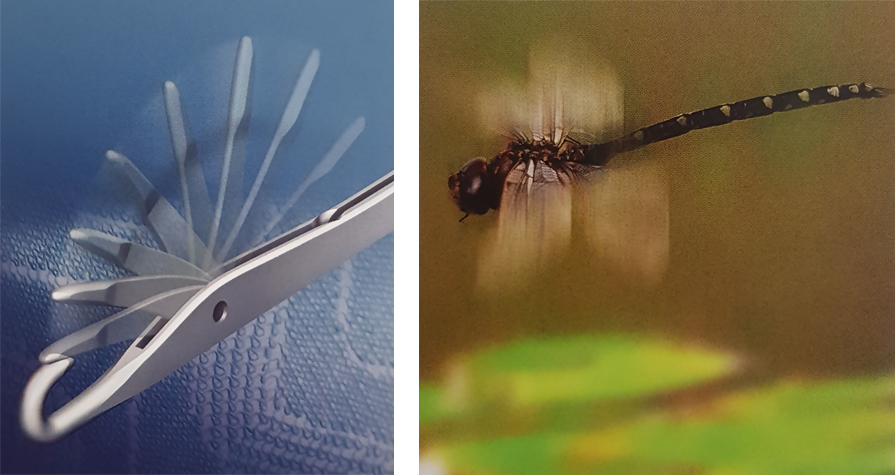Products and systems for every aspect of loop formation have traditionally been our core business.
With over 160 years of experience and know-how ,today, our range of products in the field of knitting encompasses over 50,000 different articles, all of which are subject to a standardized ISO certification.
Every knitter and machine builder has individual needs and faces different challenges in his everyday work. We will be happy to support you in finding the right solutions and identifying performance potential together with you.
Dynamics that will surprise you.
Superlatives in the knitting sector, for instance, include the Hofa-Spec – a typical loop control needle from Groz-Beckert. With a circular knitting machine rotating at 1200 rpm, with four systems and 402 needles, the tiny latches on the needle hook open and close 80 times within just one second. That is roughly three times faster than the wingbeat of a dragonfly. As a result, the machine can form more than two and a half billion loops in a single day.

Knitting is a method by which yarn is manipulated to create a textile or fabric, often used in many types of garments.
Knitting creates multiple loops of yarn, called stitches, in a line or tube. Knitting has multiple active stitches on the needle at one time. Knitted fabric consists of a number of consecutive rows of intermeshing of loops. As each row progresses, a newly created loop is pulled through one or more loops from the prior row, placed on the gaining needle, and the loops from the prior row are then pulled off the other needle.
There are two major varieties of knitting: weft knitting and warp knitting.
In the more common weft knitting, the wales are perpendicular to the course of the yarn. In weft knitting, the entire fabric may be produced from a single yarn, by adding stitches to each wale in turn, moving across the fabric.
In warp knitting, the wales and courses run roughly parallel. By contrast of weft knitting, in warp knitting, one yarn is required for every wale. Since a typical piece of knitted fabric may have hundreds of wales, warp knitting is typically done by machine, whereas weft knitting is done by both hand and machine. Warp-knitted fabrics such as tricot and milanese are resistant to runs, and are commonly used in lingerie.
Besides high-performance needles and system parts for all kinds of knitting machines, the product range also includes knitting cylinders for large diameter circular and seamless bodysize machines. For the warp knitting industry the company also offers system parts for tricot, stitch bonding, Raschel, and crochet machines, including individual parts and warp knitting modules.

